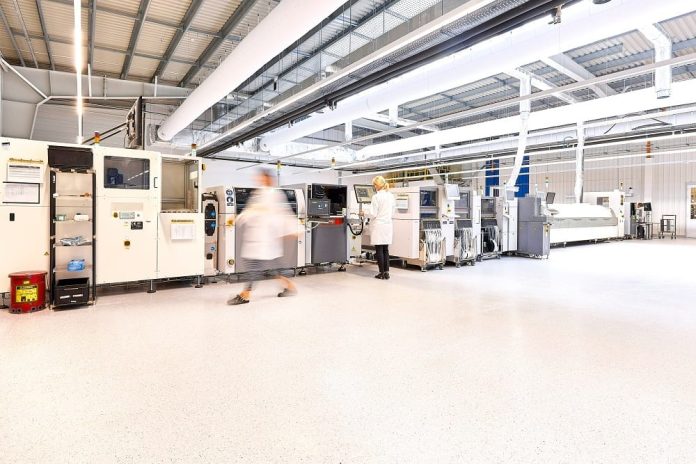French electronics manufacturer Lacroix Group has appointed Orange to deploy an indoor 5G network from Ericsson at a factory in France to run the rule over its value as a springboard for Industry 4.0, and as a foundation stone for its ‘flagship’ new ‘factory-of-the-future’.
Lacroix designs and produces embedded systems and connected equipment for the automotive, home automation, aircraft, industrial, and health sectors. It also provides connected equipment for critical infrastructure, including smart meters for water and energy systems, and various lighting, signage, and V2X systems for traffic management.
The company is described as “medium-sized” and “family-run”. The new 5G test network has been installed at its factory in Montrevault-sur-Evre, in France. National operator Orange has been recruited to “prepare [Lacroix]… for Industry 4.0” and for the “electronics factory of the future in France”.
Orange said the new 5G factory in the Loire Valley is already “recognized as a window into the future of industry”, mainly because of its role as a testbed for a brand new ‘factory-of-the-future’ site in nearby Beaupréau, which is being constructed under the project-name SYMBIOSE, as part of the group’s stated ‘smart industry strategy’.
“The aim is to build a new French flagship of electronics, a symbol of industrial renewal in France with a European or even a global reach,” said Lacroix. The Beaupréau factory will take the 5G findings from Montrevault-sur-Evre, to bring automation and intelligence to operations, and help with its environmental credentials.
It added: “We will be able to increase our competitiveness in the traditional markets for industrial electronic systems and meet the specific challenges of promising new markets such as mobility and industrial IoT.” The new plant will open at the end of next year (2021).
In the meantime, Orange and Swedish vendor Ericsson, which has been recruited in turn, are running “full-scale tests” on an indoor 5G network at the existing factory in Montrevault-sur-Evre, pitching the network as a “tool for business recovery and transformation”.
So far, four indoor 5G (Ericsson Dot) antennas have been installed inside the plant. The spectrum band utilised for the new 5G network is unconfirmed. Frequencies in the 2.6 GHz band have been offered to metropolitan businesses by regulator ARCEP in France. Orange said the antennas will broadcast “experimental frequencies”.
Orange will manage a virtualized network core, distributed between the premises of Orange and the Lacroix plant. “This enables local processing and data security, as well as network performance and efficiency, suitable for Lacroix use cases,” it commented.
Lacroix wants the existing plant in Montrevault-sur-Evre to be more adaptable and the future factory in Beaupréau to run modular production, which can be switched around easily between jobs. “The reliability of wireless connectivity will provide more flexibility in the organization of machines. The installation of the production islands in the factory may eventually be modified according to the type of production needed,” said a statement from Orange.
The pair will run rapid-fire (‘real-time’) machine-vision checks over the 5G network from the start in order to verify the quality of welds and the presence of components on its production lines. They will train algorithms to minimize errors and readjust machines, as required, they said.
They will also test 5G as a networking technology to regulate the production environment. Specifically, it is being used in controlled production of electronic cards for the aviation sector, where the assembly requires strict temperature and hydrometric regulation to prevent damage.
Orange noted the 3GPP specifies 5G will support up to one million sensors per square-kilometre; eventually, with sensors attached to every production element, factories will be able to calculate the carbon footprint and power consumption required for the production of each product. Lacroix plans this level of carbon scrutiny at the Beaupréau factory.
Orange said enterprise customers will be able to visit the plant Montrevault-sur-Evre to see the results of the 5G tests for themselves.
Helmut Reisinger, chief executive at Orange Business Services, commented: “We are very pleased to collaborate with Lacroix as part of this digitized, human and environmentally friendly factory of the future. 5G will be a digitization facilitator for Industry and a competitive lever for both the economic environment and all enterprises, regardless of size or location.”
Vincent Bedouin, chief executive at Lacroix Group, said: “Lacroix’s teams are mobilized and proud to be part of the 5G development for the industrial sector. The French electronics industry is changing, and our industry needs to be able to rely on wireless technology that can cope with the massification of data at our plants. This data is the information that will enable us to carry out predictive maintenance or provide reliable and secure information to our customers in real time..”

